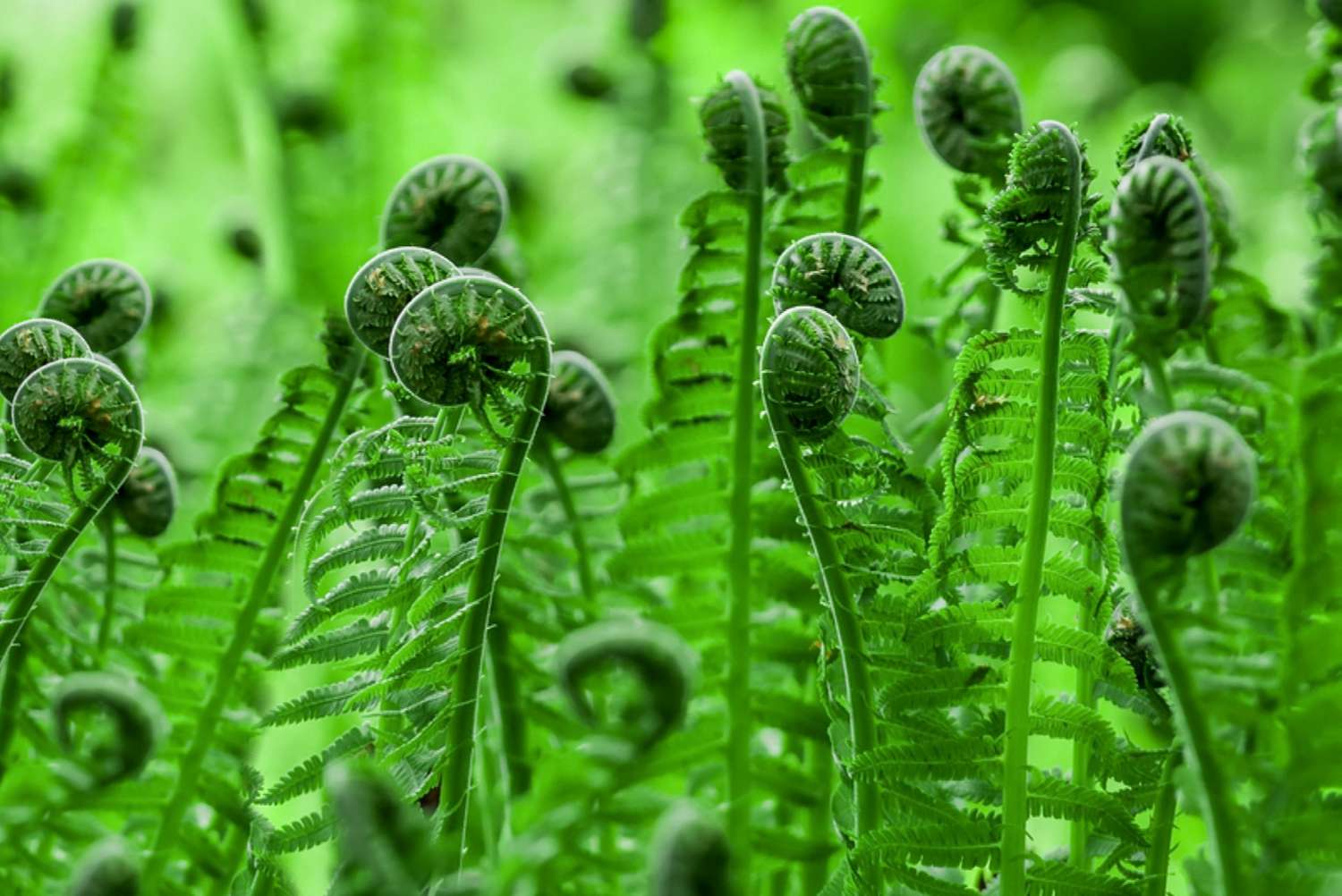
Fiddlehead ferns are more than just a quirky name—they're a fascinating part of nature and cuisine. These young, coiled fronds of ferns are not only visually intriguing but also packed with nutrients. Did you know that fiddleheads are a rich source of omega-3 fatty acids and antioxidants? They have a unique, earthy flavor that makes them a sought-after ingredient in gourmet dishes. But be careful: not all ferns are edible, and some can be toxic. Identifying the right type is crucial for safe consumption. Want to learn more about these curly greens? Keep reading to uncover 20 amazing facts about fiddlehead ferns!
Key Takeaways:
- Fiddlehead ferns are young, coiled fronds of a fern plant, rich in vitamins A and C, omega-3 and omega-6 fatty acids, and are best harvested in early spring for their unique taste and nutritional benefits.
- Fiddlehead ferns thrive in moist, shaded areas in the northern hemisphere, and can be harvested by cutting the young, tightly coiled fronds with care to ensure sustainability and safety.
What Are Fiddlehead Ferns?
Fiddlehead ferns are the young, coiled fronds of a fern plant. They are harvested for their unique taste and nutritional benefits. Let's dive into some fascinating facts about these curly greens.
-
Fiddlehead ferns get their name from their resemblance to the scroll of a violin or fiddle.
-
These ferns are typically harvested in the early spring before the fronds fully unfurl.
-
The most commonly consumed species is the ostrich fern, known for its delicious flavor.
-
Fiddleheads are rich in vitamins A and C, making them a nutritious addition to your diet.
-
They also contain omega-3 and omega-6 fatty acids, which are essential for heart health.
Where Do Fiddlehead Ferns Grow?
Fiddlehead ferns thrive in specific environments. Understanding their natural habitat can help you find them in the wild or grow them in your garden.
-
These ferns are native to the northern hemisphere, particularly in North America and Asia.
-
They prefer moist, shaded areas like riverbanks and forest floors.
-
Fiddleheads can also be found in temperate regions with high humidity.
-
They grow in clusters, making them easier to spot when foraging.
-
In some cultures, fiddlehead ferns are cultivated for commercial purposes.
How to Harvest Fiddlehead Ferns
Harvesting fiddlehead ferns requires some knowledge and care to ensure sustainability and safety.
-
Only the young, tightly coiled fronds should be harvested, as mature fronds can be toxic.
-
Use a sharp knife or scissors to cut the fiddleheads about an inch above the ground.
-
It's important to leave some fronds behind to allow the plant to continue growing.
-
Harvesting should be done in moderation to avoid depleting the fern population.
-
Always wash fiddleheads thoroughly to remove any dirt or debris.
Cooking with Fiddlehead Ferns
Fiddlehead ferns can be a delightful addition to various dishes. Here are some tips on how to prepare and cook them.
-
Blanching fiddleheads in boiling water for a few minutes helps remove any bitterness.
-
They can be sautéed with garlic and olive oil for a simple yet tasty side dish.
-
Fiddleheads can also be added to soups, salads, and pasta dishes for a unique flavor.
-
Their taste is often described as a mix between asparagus and spinach.
-
Always cook fiddleheads thoroughly to eliminate any potential toxins.
Fiddlehead ferns are not only a culinary delight but also a nutritional powerhouse. Whether foraging in the wild or buying from a market, these curly greens offer a unique addition to your meals.
Fascinating World of Fiddlehead Ferns
Fiddlehead ferns are more than just a unique vegetable. Packed with nutrients, they offer a delicious addition to various dishes. Their distinctive shape and taste make them a favorite among foragers and chefs alike. Remember, though, always cook them properly to avoid any potential health risks.
These ferns have a rich history, being used in traditional cuisines across the globe. From their nutritional benefits to their culinary versatility, fiddlehead ferns are truly a remarkable plant. Whether you're a seasoned forager or just curious about new foods, give fiddlehead ferns a try.
Their unique flavor and health benefits might just make them a staple in your kitchen. So next time you're at the market or out in the wild, keep an eye out for these curly greens. Happy foraging and cooking!
Frequently Asked Questions
Was this page helpful?
Our commitment to delivering trustworthy and engaging content is at the heart of what we do. Each fact on our site is contributed by real users like you, bringing a wealth of diverse insights and information. To ensure the highest standards of accuracy and reliability, our dedicated editors meticulously review each submission. This process guarantees that the facts we share are not only fascinating but also credible. Trust in our commitment to quality and authenticity as you explore and learn with us.


